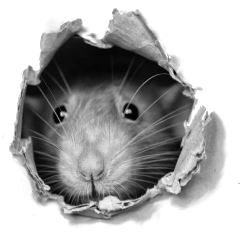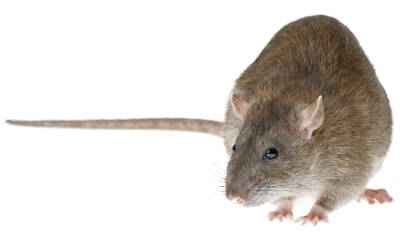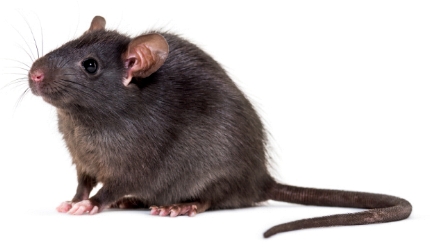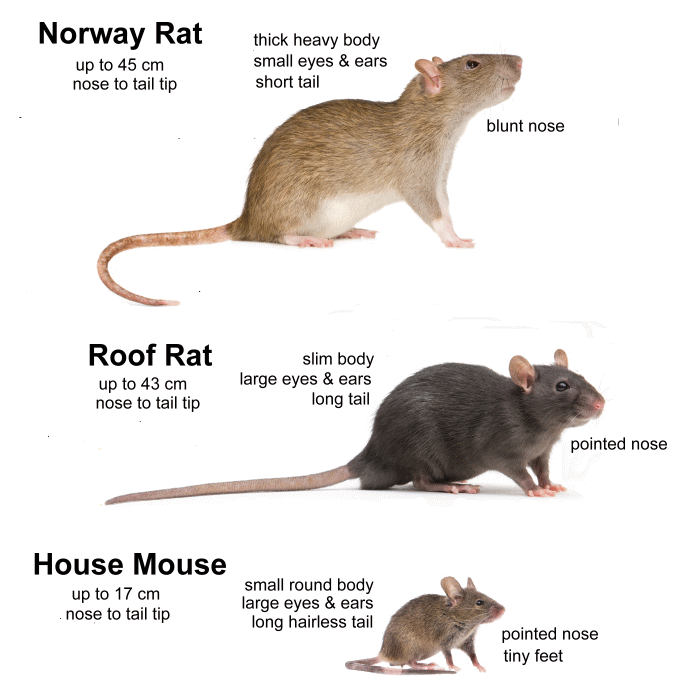  Rats are medium-sized, long-tailed rodents belonging to the order Rodentia, mostly in the genus Rattus. The Norway rat (Rattus norvegicus) and the Roof rat (Rattus rattus), sometimes called a black rat, are among the most destructive creatures known to man.
Rats are medium-sized, long-tailed rodents belonging to the order Rodentia, mostly in the genus Rattus. The Norway rat (Rattus norvegicus) and the Roof rat (Rattus rattus), sometimes called a black rat, are among the most destructive creatures known to man.Norway and Black rats were originally introduced through European settlers' ships, and can now be found almost anywhere humans live. Rat populations can increase rapidly as females are able to produce several litters per year. Being opportunistic feeders allows these rat species to invade a variety of habitat types. Lots of people dislike rats. They live in sewers. They get into garbage. They spread disease. It can be difficult to see their value, other than as an animal model for studying human illness. Rats live in proximity to people, using the food, water, and habitats that they provide. Rats live in large colonies, and their proximity to humans allows them to steal food, breed virtually uncontrollably, and harbour and transmit diseases, including plague. Both Norway and Roof rats are omnivorous, nocturnal creatures, eating whatever food they can find. Both species are colour-blind, and rely mainly on their sharp senses of smell, taste, touch, and hearing.  Norway rats like to stay close to the ground; they're weak climbers. You can find their burrows along foundations, near gardens, or under trash piles and clutter. They make use of vents and gaps around pipes to get inside buildings. They can swim, and take advantage of drainpipes and sewage lines to travel.
Norway rats like to stay close to the ground; they're weak climbers. You can find their burrows along foundations, near gardens, or under trash piles and clutter. They make use of vents and gaps around pipes to get inside buildings. They can swim, and take advantage of drainpipes and sewage lines to travel. Norway Rats are mostly found in manmade environments. They have dark brown or gray coarse fur. Norway rats are bigger than Roof rats.  Roof rats hunt for food and shelter above ground. They climb across utility lines and branches to access roofs and enter houses, grocery stores, and restaurants. They nest in attics, ceilings, and walls.
Roof rats hunt for food and shelter above ground. They climb across utility lines and branches to access roofs and enter houses, grocery stores, and restaurants. They nest in attics, ceilings, and walls. Roof (or Black) rats typically have soft, smooth black or brown fur, with scaly tails that are longer than their body length. Roof rats have pointed snouts and large hairless ears. 
Another way to tell these rats apart is by looking at their droppings. Norway rat droppings are about an inch long and have blunt ends. They look like dry raisins. Roof rat excrement is pointier, with a banana-like shape, and is half the size of Norway rat droppings. Norway and Roof rats do not usually live together because they prefer different nesting habitats. They live at different heights; Roof rats like higher places and Norway rats prefer basements and ground floors or garages. In some areas, however, such as in the warmer southern states and near the coast, the two species have been found living in the same locations. Here in the province of Alberta in Canada, we've lived without the menace of rats since 1950 when the Rat Control Program was established. Alberta’s rat-free status means there is no resident population of rats, and they are not allowed to establish themselves. It does not mean we never see rats; small infestations occasionally occur, but when found, the rats are isolated and eradicated. |